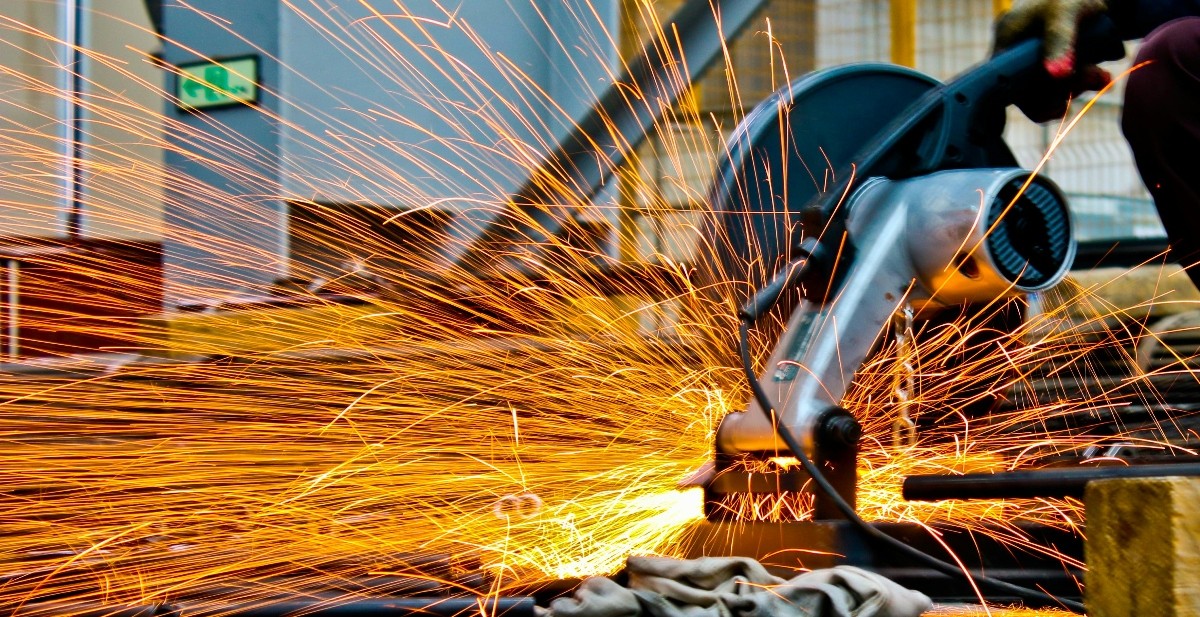Excess steel capacity fuels trade tensions

Too much steel searching for too little demand expected to continue in 2025
By Carly Fields
The international steel market is experiencing a period of upheaval, as escalating excess capacity and market-distorting policies continue to reshape global trade flows. The May 2025 OECD Steel Outlook 2025 report casts the trade stresses in a sobering light, highlighting a surge in exports driven by surplus production and intensification of trade disputes. The report squarely blames subsidies and other non-market policies and practices as the “root cause of the industry’s current problems".
A central theme from the report is the impact of China's steel exports on the global landscape. "The People’s Republic of China’s (China) steel exports to international markets are surging, depressing prices and profitability of steel industries worldwide”. The volume of the surge is staggering:
"China’s steel trade surplus surged well above 100 million metric tonnes in 2024, a massive leap over the past five years that is affecting competition across global steel markets.”
This isn't merely incremental growth; Chinese exports have more than doubled since 2020 and continued to grow substantially in 2024 to “their highest level on record". Indeed, Chinese steel exports surged to a record level of 118 million tonnes in 2024, marking a 24% year-on-year increase and “a dramatic surge over the past five years, disrupting global steel markets".
The report stressed that the size of China’s steel sector means that movements in its industry have huge effects on world markets. A key driver of this export momentum is internal market dynamics, as since the peak in Chinese steel demand in 2020, a contraction in construction demand has not been “accommodated by proportionate adjustments in steel production”, fuelling steel exports abroad. This imbalance is further compounded by the rise in China’s position in the global steel industry which is not a purely market-driven outcome. Instead, it reflects “a steel industry expansion driven by market-distorting subsidies and other non-market policies and practices", said the report.
Steel ‘crisis’ challenge
The repercussions of these burgeoning exports are manifold, triggering a wave of defensive actions worldwide. The deepening of what the OCED describes as a “steel crisis” has given rise to trade tensions and an increasing number of trade measures. Data illustrates the trend; according to the report, 81 antidumping investigations cases were initiated against 21 countries during 2024 alone, up from 16 cases involving five countries in all of 2023. This represents a "five-fold increase from the 2023 level and near the 2016 steel crisis level".
Geographically, the impact is concentrated, with almost 80% of the cases initiated against Asian producers, with China alone accounting for more than one-third of the total. Beyond product-specific measures, the report notes that a growing number of countries have introduced broader measures to protect their steel industries through sector-wide blanket increases in steel tariffs. This surge in trade actions, both specific and broad, "reflects the direct and indirect effects that sources of excess capacity are having on international trade flows of steel".
The report states that in recent years, close to 20% of steel production - more than 300 million tonnes, valued at approximately $300 billion - has been traded internationally (excluding internal EU-27 trade).
To ease the impact of trade measures, steel producers often shifting their exports to other markets with no or less restrictive trade measures. The scale of this circumvention is significant: OECD analysis indicates that during 2013-20, the amount of suspicious trade (involving rerouting of steel trade) totalled 21.5 million metric tonnes (EUR 13.3 billion), representing 17.6% of the total steel trade targeted by antidumping/countervailing duty measures."
Too little demand
The outlook for the global steel trade remains challenging, with the OECD forecasting a continuation of current trends. "The structural imbalances in the global steel market imply that recent steel trade trends, with ‘too much steel searching for too little demand’, will continue in 2025,” said the report.
In response to this persistent disequilibrium, the number of trade measures and other policies to ensure a level playing field is expected to increase in 2025.
Recent actions by major economies lend support to this prediction: In March 2025, the US reinstated a 25% ad valorem tariff under Section 232 of the Trade Expansion Act on steel products imported from all countries. Similarly, in early 2025 the European Union made adjustments to its safeguard measure to preserve its effectiveness in light of negative market developments, including growing excess capacity and related negative effects. Also, new antidumping investigations have been launched by Peru against China and Mexico against China and Vietnam.
The report concludes: "With global excess capacity expected to continue climbing, a growing number of economies are likely to resort to trade policy measures this year, particularly as the negative impacts of excess capacity spread more broadly across the globe."